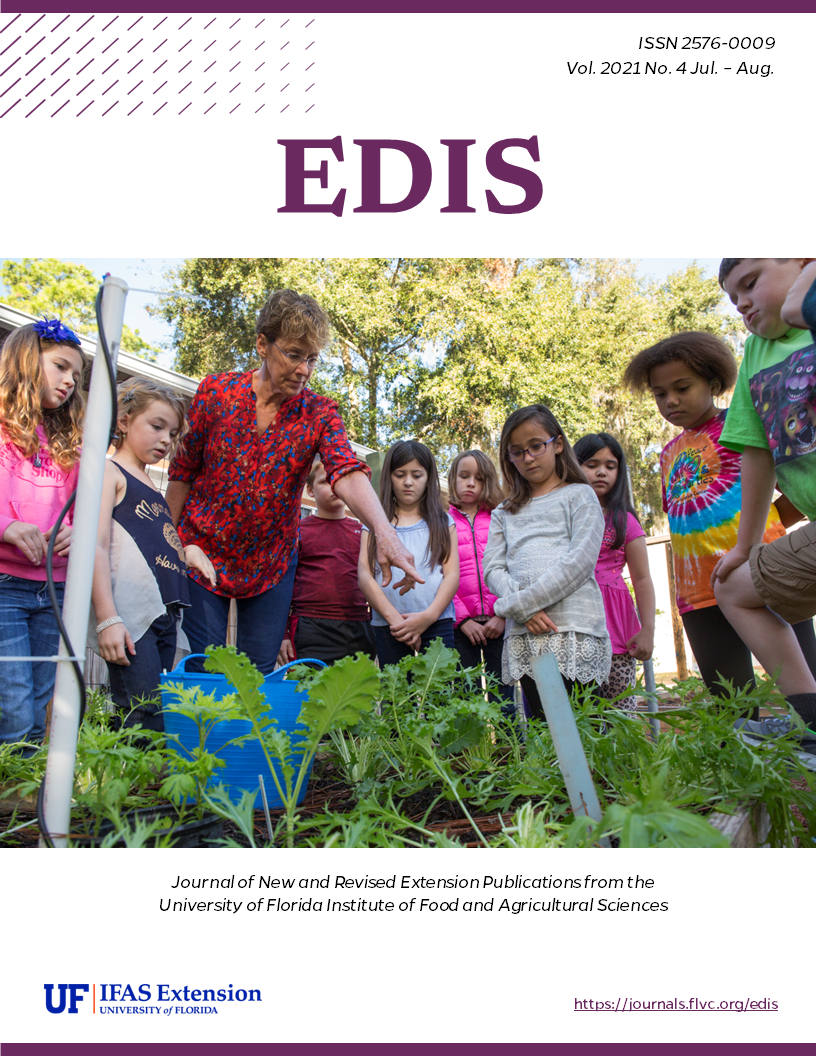Abstract
This new 5-page publication of the UF/IFAS Department of Agricultural Education and Communication describes the research used to develop the Concise Connectedness to Water Scale (CCWS), a new tool that can be used for both planning and evaluation of water-related Extension programming. It discusses findings, provides recommendations for using the tool, and shares the tool itself. This document is intended for Extension professionals and other practitioners who work on water issues.
https://edis.ifas.ufl.edu/wc394
Funding acknowledgment added 1/4/2022.
References
Ajzen, I. (1991). The theory of planned behavior. Organizational Behavior and Human Decision Processes, 50(2), 179–211. https://doi.org/10.1016/0749-5978(91)90020-T.
Barnett, C. P., Suits, T. E., Sheppard, T. D., Beattie, P. N., Loizzo, J. L., Warner, L. A., Diaz, J. M., Reisinger, A. J., & Siders, A. C. (2021, February). Youth’s connectedness to water through a manatee-focused electronic field trip [poster presentation]. Southern Region American Association for Agricultural Education Conference, virtual conference.
Diaz, J. M., Bardon, R. E., Hazel, D., Bruce, J., & Jayaratne, K. S. U. (2017). Role of extension in building sustainable partnerships with multiple stakeholders for land conservation. Journal of Human Sciences and Extension, 5(3).
Eaton, A. A., & Visser, P. S. (2008). Attitude importance: Understanding the causes and consequences of passionately held views. Social and Personality Psychology Compass, 2(4),–1736. https://doi.org/10.1111/j.1751-9004.2008.00125.x.
Frantz, C. M., & Mayer, F. S. (2014). The importance of connection to nature in assessing
environmental education programs. Studies in Educational Evaluation, 41, 85–89. https://doi.org/10.1016/j.stueduc.2013.10.001.
Mayer, F. S., & Frantz, C. M. (2004). The connectedness to nature scale: A measure of individuals’ feeling in community with nature. Journal of Environmental Psychology, 24(4), –515. https://doi.org/10.1016/j.jenvp.2004.10.001.
O’Leary, J. L., & Israel, G. D. (2013). Capturing change: Comparing pretest-posttest and retrospective evaluation methods. EDIS, 2013(1). https://doi.org/10.32473/edis-wc135-2013.
Scheer, S. D., Cochran, G. R., Harder, A. M., & Place, N. T. (2011). Competency modeling in extension education: Integrating an academic extension model with an extension human resource management model. Journal of Agricultural Education, 52(3), 64–74. https://doi.org/10.5032/jae.2011.03064.
Seevers, B., & Graham, D. (2012). Education through cooperative extension (3rd ed.). Fayetteville, AR: University of Arkansas.
University of Florida Institute of Food and Agricultural Sciences [UF/IFAS]. (2011). Shaping solutions for Florida's future: UF/IFAS Extension roadmap 2013—2023. University of Florida. Retrieved from http://pdec.ifas.ufl.edu/roadmap/FloridaExtensionRoadmap_2013-2023.pdf.
Warner, L. A., & Diaz, J. M. (2021). Amplifying the theory of planned behavior with connectedness to water to inform impactful water conservation extension program planning and evaluation. Journal of Agricultural Education and Extension, 27(2), 229–253. https://doi.org/10.1080/1389224X.2020.1844771.
Warner, L. A., Diaz, J. M., Bravo, L., Pinson, N. D., Clem, T., & Thralls, E. L. (2020, February). Do Extension program participants feel more connected to water following a multi-week program? Results from a pilot test of the connectedness to water scale. HortScience, 55(9), S395.
Warner, L. A., Diaz, J. M., & Gusto, C. (2019). Exploring blue space as a tool for promoting good fertilizer practices among Florida residential fertilizer users. Journal of Applied Environmental Education and Communication, 19(3), 274–286. https://doi.org/10.1080/1533015X.2019.1586597.
White, M. P., Pahl, S., Wheeler, B. W., Fleming, L. E. F., & Depledge, M. H. (2016). The ‘blue gym’: What can blue space do for you and what can you do for blue space? Journal of the Marine Biological Association of the United Kingdom, 96(1), 5–12. https://doi.org/10.1017/S0025315415002209.


